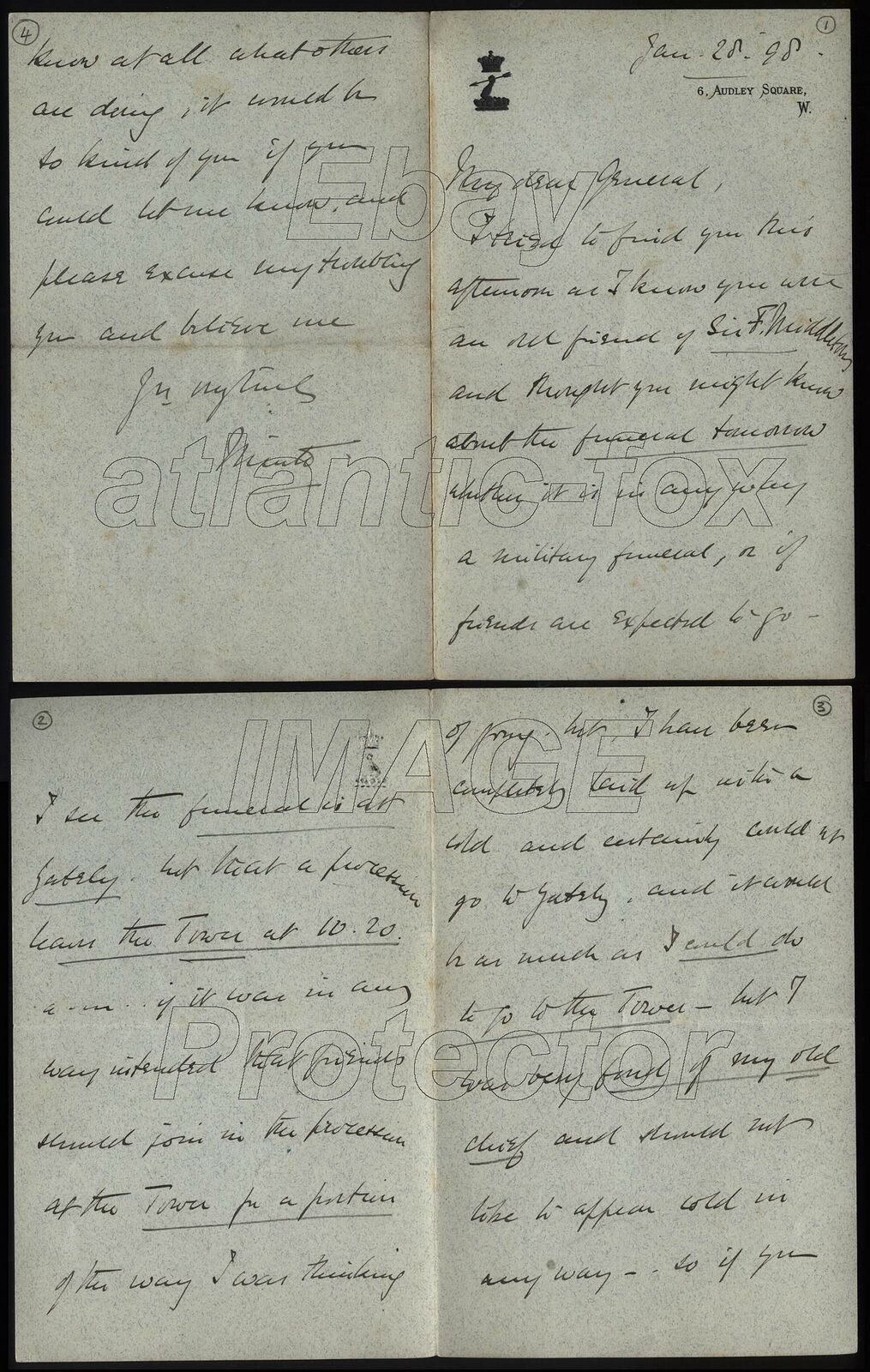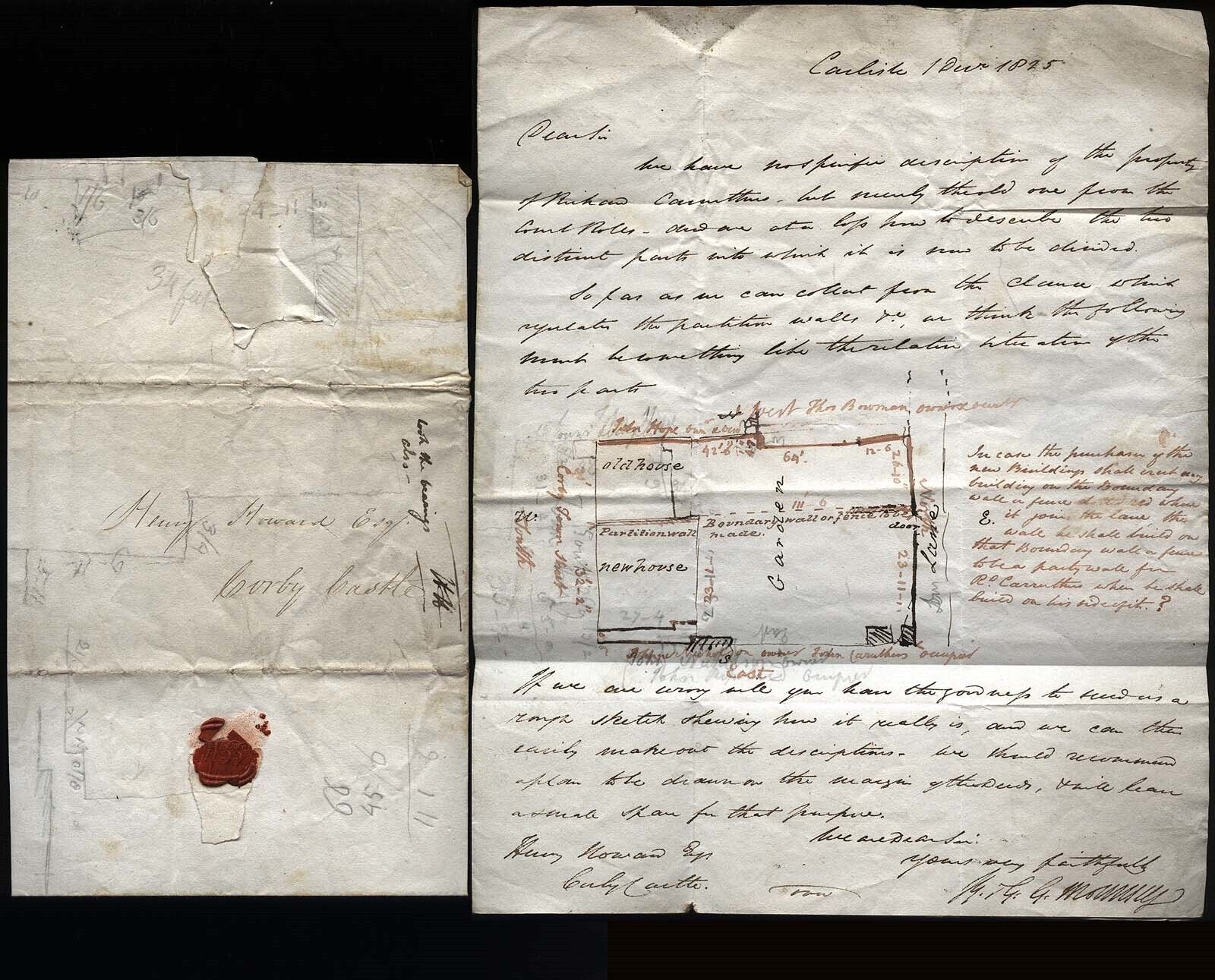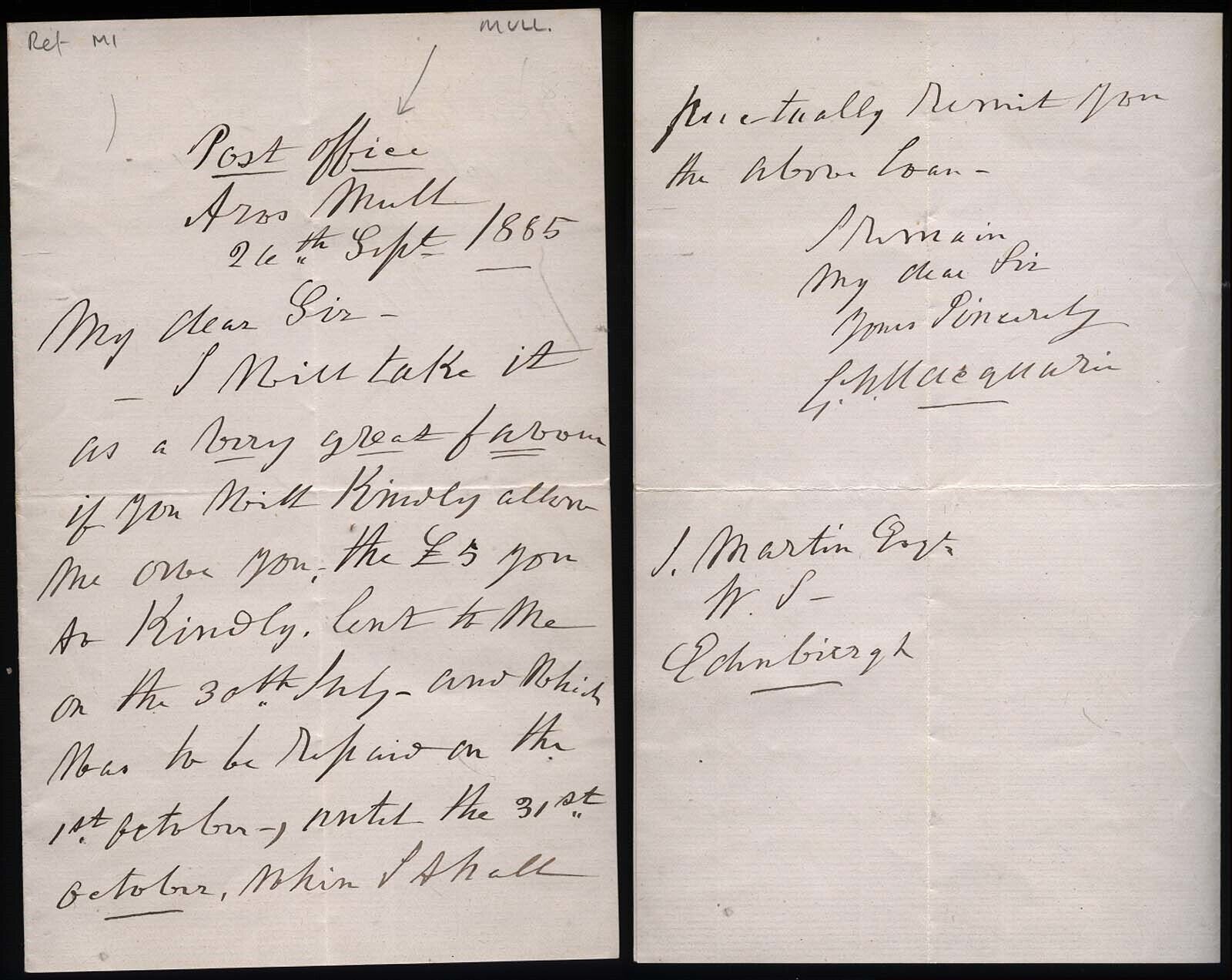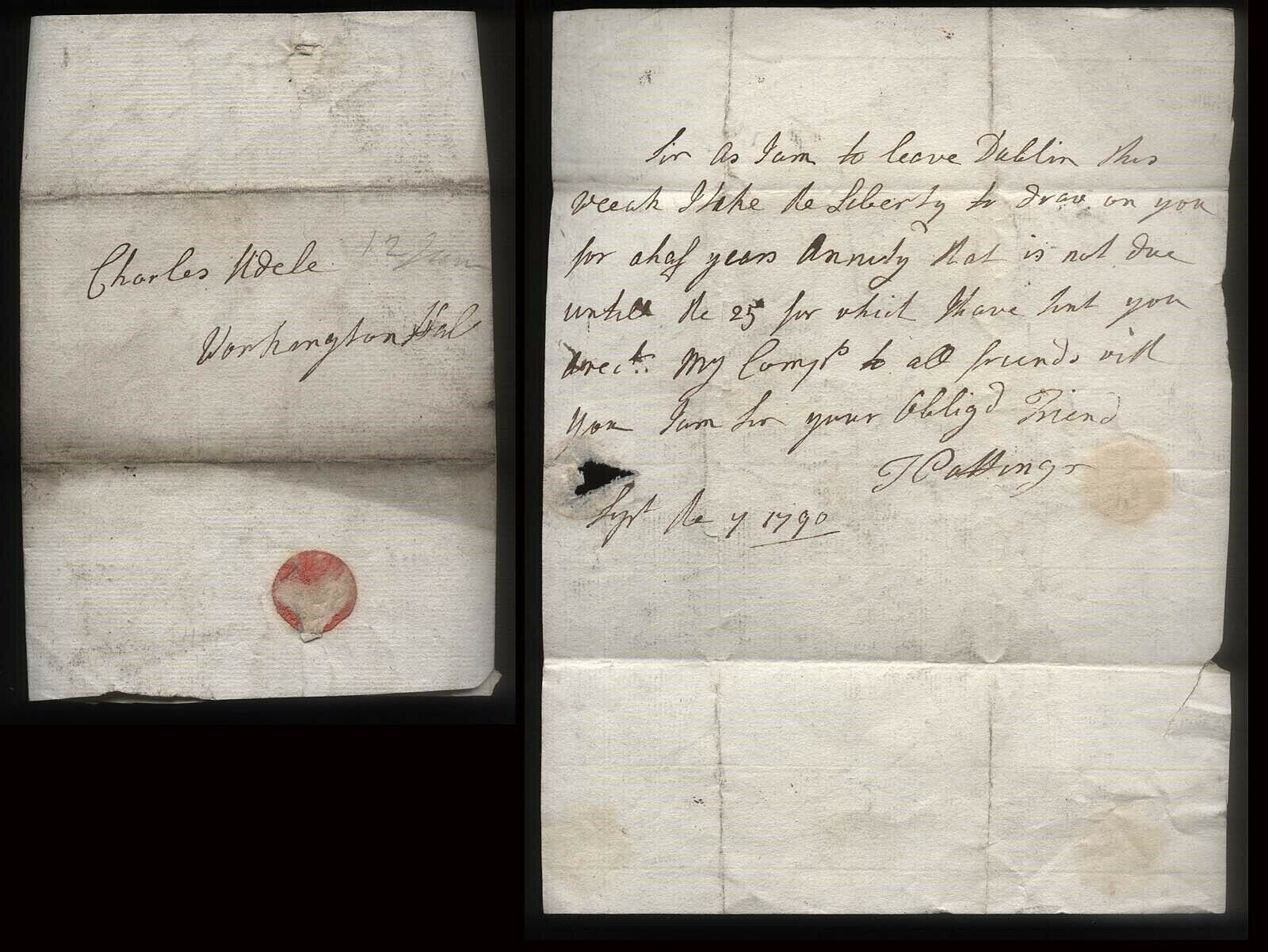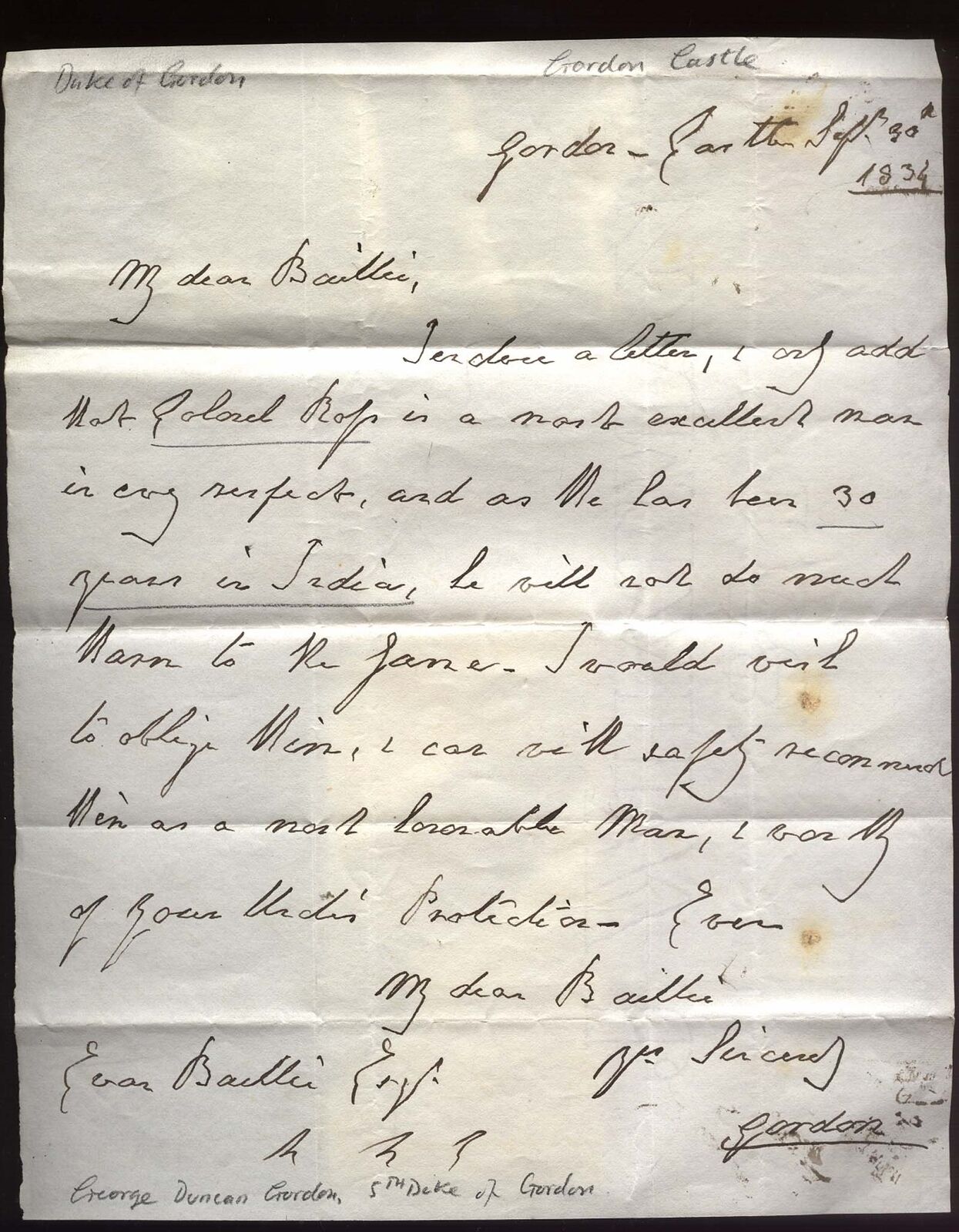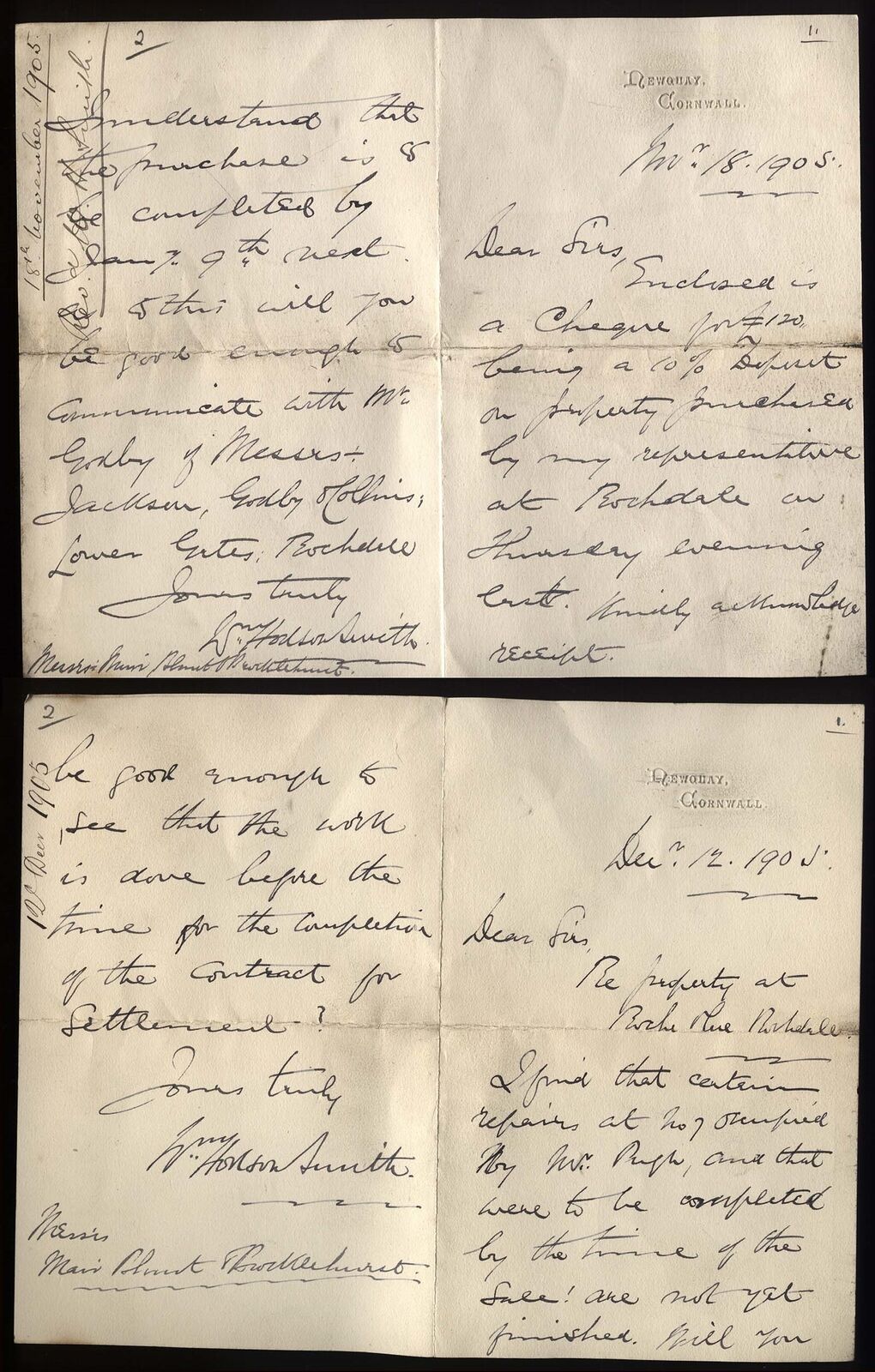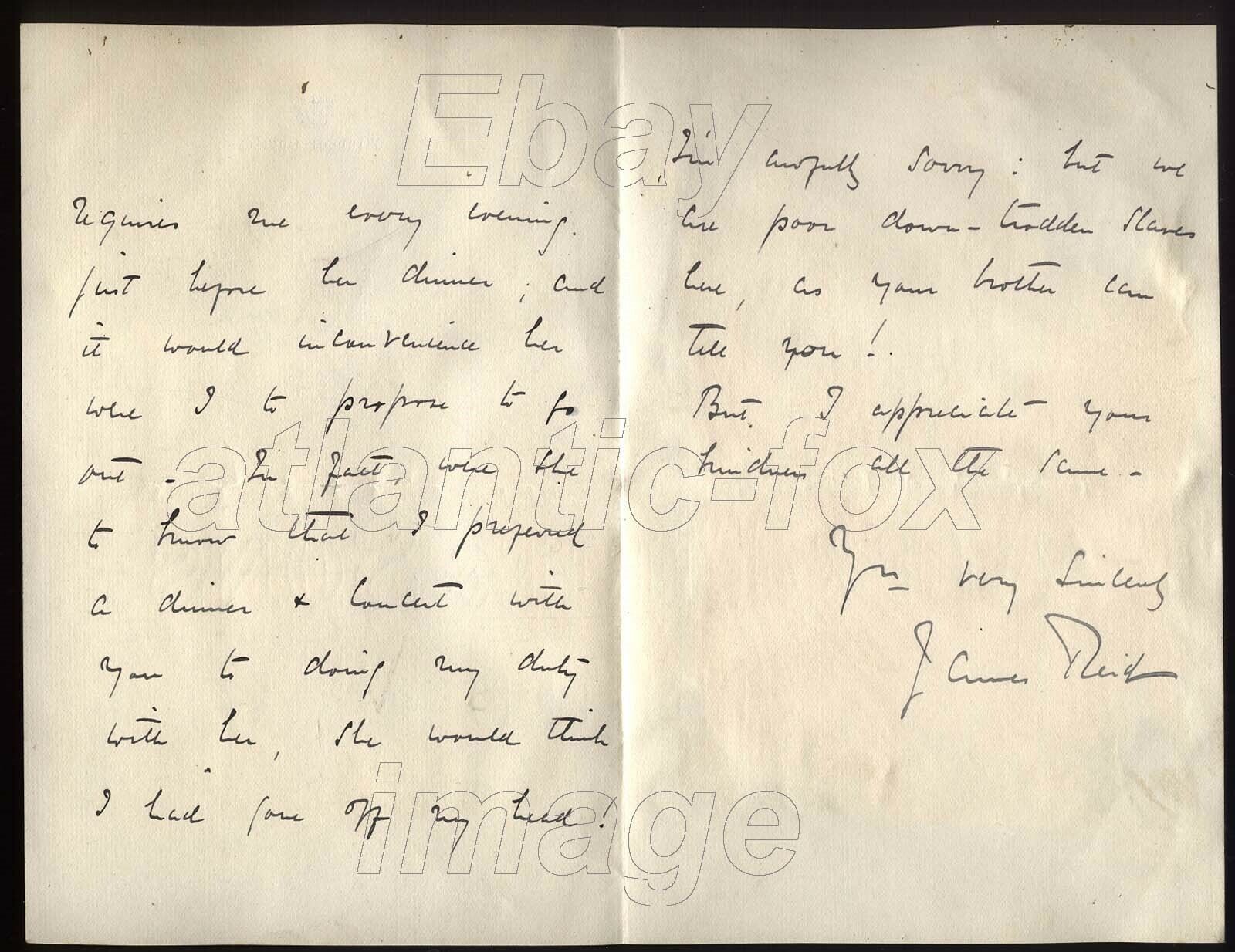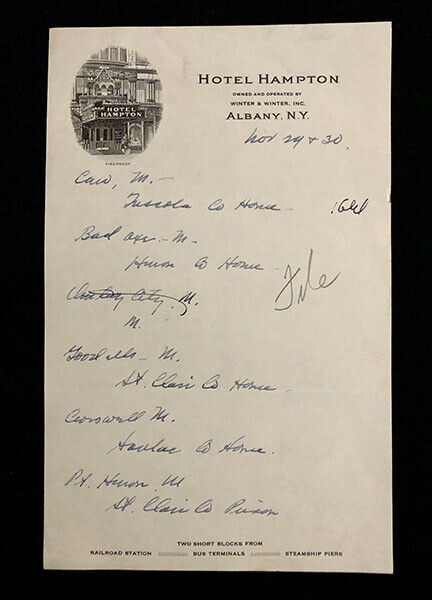-40%
1898 London, 4th Earl of MINTO to General Sir Martin Dillon, re SiR F Middleton
$ 79.98
- Description
- Size Guide
Description
1898 London, 4th Earl of MINTO to General Sir Martin Dillon, re SiR F MiddletonThis product data sheet is originally written in English.
1898 London, 4th Earl of MINTO to General Sir Martin Dillon, regarding his old Chief, General Sir Frederick Middleton.and his Funeral, from the Tower , and saying he has been laid up with cold and could not make it to Tateley, Hants but could make it to the Tower of London.
Gilbert John Elliot-Murray-Kynynmound, 4th Earl of Minto, KG, GCSI, GCMG, GCIE, PC (9 July 1845 – 1 March 1914), known as Viscount Melgund by courtesy from 1859 to 1891, was a British peer and politician who served as Governor General of Canada, the eighth since Canadian Confederation, and as Viceroy and Governor-General of India, the country's 17th.
Early life and career Minto was born in London, the son of William Elliot-Murray-Kynynmound, 3rd Earl of Minto, and Emma, daughter of General Sir Thomas Hislop, 1st Baronet. After the death of his grandfather in 1859 he became known by the courtesy title of Viscount Melgund. After completing his education at Eton College and Trinity College, Cambridge,[1] he was commissioned a Lieutenant in the Scots Guards in 1867, but left in 1870. He joined the 1st
Roxburghshire
Mounted Rifle Volunteer Corps as a Captain in 1872. In 1874, in the capacity of a newspaper correspondent, he witnessed the operations of the
Carlists
in Spain; he took service with the Turkish army in the war with Russia in 1877 and served under Lord Roberts in the second Afghan War (1878–1879), having narrowly escaped accompanying Sir Louis
Cavagnari
on his fatal mission to Kabul.
He acted as private secretary to Lord Roberts during his mission to the Cape in 1881,[2] and was with the army occupying Egypt in 1882, thus furthering his military career and his experience of colonial administration. He was promoted Major in 1882. He was military secretary to the Marquess of
Lansdowne
during his governor-generalship of Canada from 1883 to 1885, and lived in Canada with his wife, Mary Caroline Grey, sister of Lord Grey, Governor General from 1904 to 1911, whom he had married in Britain on 28 July 1883. On this first Canadian visit, he was very active in raising a Canadian volunteer force to serve with the British Army in the Sudan Campaign of 1884. He served as Chief of Staff to General Middleton in the Riel Rebellion of 1885. When he was offered command of the North-West Mounted Police, he decided instead to pursue a political career in Britain. On his departure home to Britain, Canadian Prime Minister Sir John A. Macdonald apparently said to him, "I shall not live to see it, but some day Canada will welcome you back as Governor General".
His political aspirations were checked with his defeat in the 1886 general election, where he stood as the Conservative candidate for Hexham. He then applied himself with great enthusiasm to promoting a volunteer army in Britain. In 1888 he was promoted Colonel on assuming command of the South of Scotland Brigade. He resigned his commission in 1889. He succeeded to his father's earldom in 1891, becoming The Earl of Minto
Governor General of Canada Macdonald's prediction came true when Minto was named Governor General of Canada in the summer of 1898, having campaigned for the post after he learned of the retirement of Lord Aberdeen.[2][3] Sir Wilfrid Laurier wrote that Lord Minto "took his duties to heart" and a review of his life reveals an energetic man who welcomed many challenges and responsibilities.
Lord Minto's term of office was marked by a period of strong nationalism which saw economic growth coupled with massive immigration to Canada. Relations with the United States were strained as border and fishing disputes continued to create problems between the two countries.
In September 1901, after Queen Victoria's death in January, the Duke and Duchess of Cornwall and York (later to become King George V and Queen Mary) visited Canada, and travelled with Lady Minto to western Canada and the Klondike. Following the tour, Minto recommended Thomas Shaughnessy, President of the Canadian Pacific Railway, to the government at Westminster, via the Secretary of State for the Colonies, for a knighthood, as recognition for his service to the Duke and Duchess of York. Prime Minister Wilfrid Laurier, to whom Shaughnessy was no friend, opposed the idea; but, Minto made the recommendation anyway, invoking the ire of Laurier and prompting the Prime Minister to draft a policy dictating that all Canadian nominees for honours must be approved by the prime minister before the list was sent to London
On 6 December 1901, Lord Minto held a skating party on the Ottawa River, when Andrew George Blair's daughter Bessie, and potential rescuer Henry Albert Harper both drowned.
Lord Minto, like his predecessors, travelled throughout the young country—he crossed Quebec, Ontario and western Canada, visiting former battlegrounds where he had served during the North-West Rebellion. He rode throughout western Canada with the North-West Mounted Police, and enjoyed the Quebec countryside on horseback.
Lord Minto's convictions about the importance of preserving Canadian heritage led to the creation of the National Archives of Canada.
. Lord and Lady Minto were SPORTS enthusiasts and the Minto Skating Club, which they founded in 1903, has produced many famous ice skaters. They both excelled at the sport and hosted many lively skating parties during their time at Rideau Hall. In the summer, the Minto family loved to bicycle and play lacrosse. In 1901, Lord Minto donated the Minto Cup and appointed trustees to oversee its annual awarding to the champion senior men's lacrosse team of Canada (since 1937 the Cup has been awarded to the junior men's champions). He loved the outdoors, championed the conservation of natural resources and promoted the creation of national parks.
In education and health, Lord Minto encouraged a forward-looking approach. He believed that Canada's progress depended on the cultivation of patriotism and unity, and this conviction was reflected in his desire to see a wider history curriculum developed in Canadian schools. In response to the health crisis posed by tuberculosis, he helped establish the first anti-tuberculosis foundation in Canada.
Lord Minto also took great interest in the development of the Canadian military and emphasized the need for training and professional development. He was appointed honorary Lieutenant-Colonel of the Governor General's Foot Guards Regiment on 1 December 1898 and was subsequently appointed Honorary Colonel, a tradition that has continued with the post of Governors General to this day.
He was appointed a Privy Counsellor on 11 August 1902,[5] following an announcement of the King's intention to make this appointment in the 1902 Coronation Honours list published in June.
On his trip back to Britain in 1904, having finished his term as Canada's Governor General, Lord Minto wrote in his journal "... so our life in Canada is over and it has been a great wrench parting from so many friends and leaving a country which I love, and which has been very full of interest to me".
Viceroy and Governor General of India
This section needs expansion. You can help by adding to it. (April 2015) In 1905, on the resignation of Lord Curzon of Kedleston, Minto was appointed Viceroy and Governor-General of India, retiring in 1910.[2] In this, he followed in the footsteps of his great-grandfather, the first Lord Minto. When John Morley as Secretary of State for India wrote to Minto arguing that "Reforms may not save the Raj, but if they don't, nothing else will", Minto replied:
...when you say that "if reforms do not save the Raj nothing else will" I am afraid I must utterly disagree. The Raj will not disappear in India as long as the British race remains what it is, because we shall fight for the Raj as hard as we have ever fought, if it comes to fighting, and we shall win as we have always won.[7]
The reforms were called usually by the name "Morley-Minto Reforms" because of both John Morley and Lord Minto worked together to draw these reforms. They were passed by the British parliament in 1909 as the Indian Councils Act. He was succeeded by Lord Hardinge of Penshurst.
For his lifetime of service, he was made a Knight of the Garter.
Marriage
He married, on 28 July 1883, Lady Mary Caroline Grey, daughter of Charles Grey and Caroline Eliza Farquhar. They had five children:
Lady Eileen Nina Evelyn Sibell Elliot-Murray-Kynynmound (13 December 1884 – 29 May 1938), married Lord Francis Montagu Douglas Scott (son of the 6th Duke of Buccleuch and Lady Louisa Hamilton), and had issue; Lady Ruby Florence Mary Elliot-Murray-Kynynmound (26 September 1886 – 5 November 1961), married Rowland Baring, 2nd Earl of Cromer, and had issue; Lady Violet Mary Elliot-Murray-Kynynmound (28 May 1889 – 3 January 1965), married, firstly, Lord Charles Petty-Fitzmaurice, and had issue, secondly, John Astor, 1st Baron Astor of Hever, and had issue; Victor Elliot-Murray-Kynynmound, 5th Earl of Minto (12 February 1891 – 11 January 1975); The Honourable Gavin William Esmond Elliot-Murray-Kynynmound (25 April 1895 – 6 August 1917; killed in action).[citation needed] Legacy
The Earl of Minto's popularity in Canada outlived him. In addition to a Minto Place in Rockcliffe, Ottawa and Minto Street in Vancouver and the SS Minto, a famous steamer on the Arrow Lakes, the gold-mining company town of Minto City in the Bridge River Country, established 1936, was named in honour of the Earl. Also named for the Earl was Mount Minto in the Atlin District of far northern British Columbia, the town of Minto, Ontario, and the town of Minto, North Dakota in the United States.[citation needed] In addition, Minto, New Brunswick was renamed in memory of him. The Earl of Minto and Lady Minto appeared on the obverse of the Canadian four-dollar bill in the 1900 and 1902 versions of this denomination.
Minto Park in Kolkata (formerly Calcutta), India, commemorates him. The school from which Aligarh Muslim University evolved was named behind him as Minto Circle after his generous funding for the construction of the new school buildings.
Minto Road, an area where most of the ministers of Bangladesh government have their official residence, is named after Lord Minto.
Minto Hospital and Minto Park (now officially renamed but popularly still known as such) in Lahore were also named after him.
Minto Ophthalmic Hospital[8] in Bangalore is also named after him. It is the oldest eye hospitals in India and one of the largest and busiest eye hospitals in the country.
See also
General Sir Frederick Dobson Middleton KCMG CB (4 November 1825 – 25 January 1898) was a British general noted for his service throughout the Empire and particularly in the North-West Rebellion
.
Imperial Military career Educated at Maidstone Grammar School and the Royal Military College, Sandhurst, Middleton was commissioned into the 58th Regiment of Foot in 1842.
He served in the New Zealand Wars and in 1845, he was mentioned in dispatches for his part in the capture of the stronghold of Maori chief Te Ruki Kawiti.
In 1848 he transferred to the 96th Regiment of Foot in India and took part in the suppression of the Indian Mutiny in which campaign he was recommended for, but not awarded, the Victoria Cross.[1] He went on to be Commandant of the Royal Military College, Sandhurst, in 1879.
Canadian military career
He was appointed General Officer Commanding the Militia of Canada in 1884
Middleton just happened to be on the scene when in 1885 a group of Métis launched the [[North-West Rebellion]. Middleton was named commander of the main force used to put it down.[1] His force was victorious in the Battle of Batoche, which ended the rebellion.
Middleton had travelled from Ottawa to Winnipeg to evaluate Military District 10, which covered the Prairies, as the officer in charge of District 10 had just been dismissed on the account of his alcoholism. This was the same day as the Battle of Duck Lake, the opening round of the Rebellion. Metis fighters defeated a force of the North-West Mounted Police there.
Though Middleton was elderly and cautious, his response to the news of Duck Lake was swift. That same day, he departed Winnipeg on a train bound for Qu'Appelle with a company of Manitoba militia.
The major difficulty for Middleton was mobilizing the militia forces of Ontario and Quebec. They had to travel on the only-partially-completed Canadian Pacific Railway. This required the men to march through the snow and rocks of northern Ontario to reach Winnipeg, the headquarters of the Canadian forces.
Canadian historian Desmond Morton described Middleton as an experienced soldier who "mixed common sense and pomposity in equal measure". His plan was to take Batoche, the capital of the Metis exovedate (council), which he predicated would end the rebellion.[3] As the rebellion had shaken international confidence in the credit-worthiness of Canada, Middleton was under immense pressure from Prime Minister Sir John A. Macdonald, to end the rebellion as soon as possible.
The militiamen arriving in Winnipeg were mostly untrained, and Middleton had to train them as they marched to the front.
On 6 April 1885, Middleton set off on a march to Batoche.[3] On 23 April 1885, the Metis and Cree First Nation under Gabriel Dumont ambushed the Canadians at Fish Creek.[4] Despite Middeton's orders, Colonel William Dillon Otter after reaching Battleford, set out to do battle with the Cree, and was defeated by Chief Poundmaker at the Battle of Cut Knife Hill; only the latter's unwillingness to have his warriors take advantage of the rout saved the Canadians from being annihilated.[5] Poundmaker was a reluctant rebel against Canada, and did not want the Canadian forces annihilated, believing this would save his people from reprisals.[5] Middleton planned to advance on Batoche with river steamers owned by the Hudson's Bay Company bringing up supplies along the South Saskatchewan river, and as steamers were not available at first, Middleton chose to wait.[6] Despite their own panic at Fish Creek, many of the militiamen came to curse "Old Fred" as too timid, but Middleton had sound reasons for not wishing to advance without a means of resupply.[5] Middleton knew that the Métis and the Cree were expert horsemen and believed they would ambush any supply wagons, which is why he preferred to bring up supplies and reinforcements via the river.
On 5 May 1885, the streamer Northcote was ready and Middleton set off for Batoche.[5] On 9 May 1885, the Northcote was stopped by a cable that Dumont had laid across the river outside of Batoche, and its American captain turned back when the boat came under fire.[5] The Northcote was a diversion to draw out the Métis and at the same time, the Field Force under Middleton arrived at Batchoe.[5] Seeing his troops beginning to panic again, Middleton ordered his wagons to be drawn into a circle to form a strong defensive position.[7] On 11 May 1885, Middleton observed that the outnumbered Métis and Cree had to rush from position to position on the Prairies and on the morning of 12 May 1885, Middleton ordered his artillery would open fire on his opponents to pin them down while his infantry would advance.[8] Nothing had happened as infantry claimed not to hear the fire of the artillery; after accusing his men of cowardice, Middleton attacked again on the afternoon and with a battalion commanded by a Conservative MP, Colonel Arthur Williams leading the attack.[8] Inspired by the example of Williams's battalion, other battalions began to charge forward. Shouting enthusiastically, the Canadians raced down from the hill, and disheartened Métis and Cree were soon defeated.
Morton described Middleton as cautious, but highly professional officer who was a better tactician than Dumont, who brought the war to a swift conclusion in a manner that was much less bloodier than it could have been.[9] For his service in the war, Middleton was knighted by Queen Victoria in 1885.[1] He also received the thanks of the Parliament of Canada and the sum of ,000.
He resigned as head of the militia in 1890 when a select committee of the House of Commons criticized him for the misappropriation of furs from a Scotch-Indian Charles Bremner and his Cree wife Emily Bremner, during the rebellion.[1] There were also other criticisms of Middleton's command during the rebellion, such as his hesitancy to unleash the Canadian militia troops to assault the Métis positions at Batoche, and unfair treatment and poor maintenance accorded the troops under his command.
In 1896 he was appointed keeper of the crown jewels, a fitting rebuke to those who had harried him from Canada as a thief. To the end, he remained fit and active, walking daily and skating when he could. He died suddenly in his quarters at the Tower of London.
Family
Frederick Dobson Middleton married, as his first wife, Mary Emily Hassall.
He married in February 1870 as his second wife, Marie Cecile Eugénie Doucet, daughter of Theodore Doucet, N.P., of Montreal. She was born in Montreal in 1846, and was educated at the Convent of the Sacred Heart, Sault-au-Recollet. The couple had two sons and a daughter. She died at Tateley, Hants, England, 1 November 1899.
:
Powered by SixBit's eCommerce Solution
1898 London, 4th Earl of MINTO to General Sir Martin Dillon, regarding his old Chief, General Sir Frederick Middleton.and his Funeral, from the Tower , and saying he has been laid up with cold and could not make it to Tateley, Hants but could make it to the Tower of London. Gilbert John Elliot-Murray-Kynynmound, 4th Earl of Minto, KG, GCSI, GCMG, GCIE, PC (9 July 1845 – 1 March 1914), known as Viscount Melgund by courtesy from 1859 to 1891, was a British peer and politician who served as Governor General of Canada, the eighth since Canadian Confederation, and as Viceroy and Governor-General of India, the country's 17th. Early life and career Minto was born in London, the son of William Elliot-Murray-Kynynmound, 3rd Earl of Minto, and Emma, daughter of General Sir Thomas Hislop, 1st Baron
Related Interests
General Sir Frederick Middleton
EAN
Does Not apply
Country
England
Related Interests 2
Governor General of Canada
England County
Middlesex
City/Town/Village/Place
London
Family Surname
Elliot-Murray-Kynynmound
Titled Families
4th Earl of Minto
Addressed to
General Sir Martin Dillon
Document Type
Original Manuscript Letter
Year of Issue
1898
Street Location
6 Audley Square W.
